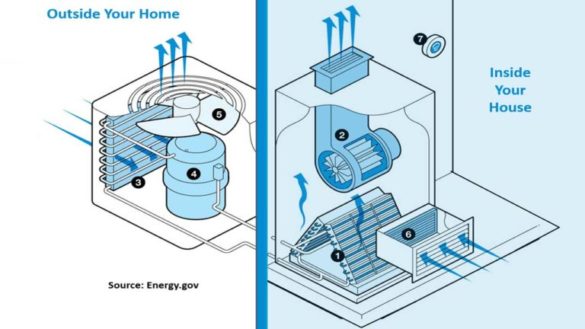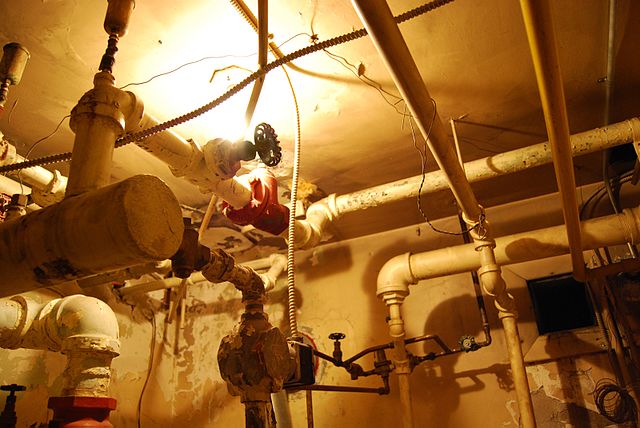Just how do you actually feel when it comes to Exploring Your Homes Plumbing Anatomy?

Recognizing how your home's pipes system functions is important for each house owner. From supplying tidy water for drinking, cooking, and showering to securely eliminating wastewater, a well-maintained pipes system is important for your family's health and wellness and comfort. In this comprehensive guide, we'll check out the elaborate network that makes up your home's pipes and deal suggestions on upkeep, upgrades, and dealing with typical concerns.
Introduction
Your home's plumbing system is greater than just a network of pipelines; it's a complicated system that ensures you have access to tidy water and effective wastewater elimination. Recognizing its parts and just how they collaborate can aid you avoid costly repair services and ensure every little thing runs efficiently.
Fundamental Components of a Plumbing System
Pipes and Tubes
At the heart of your plumbing system are the pipelines and tubing that bring water throughout your home. These can be constructed from various materials such as copper, PVC, or PEX, each with its advantages in regards to resilience and cost-effectiveness.
Components: Sinks, Toilets, Showers, and so on.
Fixtures like sinks, toilets, showers, and tubs are where water is used in your home. Comprehending how these components connect to the pipes system helps in detecting problems and preparing upgrades.
Shutoffs and Shut-off Points
Valves regulate the flow of water in your plumbing system. Shut-off shutoffs are crucial during emergency situations or when you require to make repairs, allowing you to isolate parts of the system without disrupting water flow to the whole residence.
Supply Of Water System
Key Water Line
The major water line connects your home to the local water or a private well. It's where water enters your home and is dispersed to numerous fixtures.
Water Meter and Stress Regulator
The water meter actions your water usage, while a stress regulator guarantees that water moves at a safe pressure throughout your home's pipes system, preventing damages to pipes and components.
Cold Water vs. Warm water Lines
Comprehending the difference in between cold water lines, which provide water straight from the main, and hot water lines, which lug warmed water from the water heater, helps in troubleshooting and planning for upgrades.
Drainage System
Drain Piping and Traps
Drain pipelines lug wastewater far from sinks, showers, and bathrooms to the drain or septic tank. Catches stop drain gases from entering your home and likewise catch particles that can cause clogs.
Ventilation Pipes
Ventilation pipes allow air into the drainage system, avoiding suction that might slow drainage and cause traps to empty. Proper ventilation is vital for preserving the stability of your pipes system.
Significance of Proper Drainage
Making certain appropriate water drainage protects against backups and water damage. Frequently cleaning up drains and maintaining catches can protect against pricey fixings and prolong the life of your plumbing system.
Water Furnace
Sorts Of Hot Water Heater
Hot water heater can be tankless or standard tank-style. Tankless heaters heat water on demand, while tanks save warmed water for instant use.
How Water Heaters Connect to the Pipes System
Comprehending how water heaters attach to both the cold water supply and warm water distribution lines helps in diagnosing concerns like not enough warm water or leakages.
Upkeep Tips for Water Heaters
Regularly flushing your hot water heater to get rid of sediment, checking the temperature level settings, and inspecting for leakages can expand its lifespan and improve energy efficiency.
Typical Plumbing Issues
Leakages and Their Reasons
Leakages can happen due to maturing pipelines, loose installations, or high water stress. Dealing with leaks without delay protects against water damage and mold and mildew development.
Clogs and Clogs
Obstructions in drains and toilets are usually brought on by purging non-flushable things or a build-up of oil and hair. Using drain displays and being mindful of what goes down your drains can prevent obstructions.
Signs of Pipes Problems to Expect
Low water stress, slow drains pipes, foul odors, or unusually high water expenses are signs of prospective plumbing issues that should be attended to quickly.
Plumbing Upkeep Tips
Regular Assessments and Checks
Schedule yearly plumbing assessments to catch concerns early. Search for indicators of leaks, deterioration, or mineral buildup in faucets and showerheads.
Do It Yourself Maintenance Tasks
Easy tasks like cleansing faucet aerators, looking for commode leaks utilizing dye tablets, or insulating subjected pipelines in cold environments can prevent major pipes issues.
When to Call an Expert Plumbing Professional
Know when a plumbing concern requires expert competence. Attempting complicated fixings without proper understanding can cause even more damages and higher repair service prices.
Updating Your Pipes System
Reasons for Upgrading
Updating to water-efficient components or replacing old pipes can enhance water top quality, lower water costs, and increase the value of your home.
Modern Plumbing Technologies and Their Advantages
Discover technologies like clever leakage detectors, water-saving commodes, and energy-efficient hot water heater that can conserve cash and reduce ecological impact.
Cost Considerations and ROI
Determine the ahead of time prices versus long-term financial savings when considering pipes upgrades. Several upgrades spend for themselves via minimized energy costs and less fixings.
Ecological Influence and Preservation
Water-Saving Components and Appliances
Setting up low-flow faucets, showerheads, and bathrooms can substantially minimize water use without giving up efficiency.
Tips for Lowering Water Use
Simple habits like fixing leaks promptly, taking shorter showers, and running complete lots of laundry and meals can conserve water and lower your utility bills.
Eco-Friendly Plumbing Options
Take into consideration lasting pipes products like bamboo for flooring, which is durable and environmentally friendly, or recycled glass for kitchen counters.
Emergency situation Readiness
Actions to Take Throughout a Pipes Emergency
Know where your shut-off valves are located and how to turn off the water supply in case of a ruptured pipeline or significant leak.
Significance of Having Emergency Situation Calls Helpful
Keep contact information for neighborhood plumbing technicians or emergency solutions easily available for quick feedback during a plumbing situation.
DIY Emergency Situation Fixes (When Relevant).
Short-term fixes like utilizing duct tape to spot a dripping pipe or placing a pail under a dripping tap can reduce damage till an expert plumbing arrives.
Final thought.
Understanding the makeup of your home's plumbing system encourages you to preserve it efficiently, saving money and time on repair work. By adhering to regular upkeep routines and remaining notified about contemporary plumbing modern technologies, you can guarantee your pipes system operates effectively for years ahead.
HOW YOUR PLUMBING SYSTEM WORKS
Which Pipes Do What?
Blue lines = fresh water supply entering the building
Red lines = hot water supply entering the building
Grey lines = pipes carrying waste away from the building and venting pipes carrying gases away from the building (through the roof)
YOUR MAIN PLUMBING SYSTEMS
There are two main plumbing systems that support your home s basic plumbing needs one that brings clean water into your home, and one that sends dirty water away from your home. Connected to the toilet, bath, shower, and other faucets in your home, these two systems keep your water flowing in the right directions.
ACCESSING FRESH WATER
Fresh and clean water is brought into your home through the main water supply line . Filtered through one pipe, this water is pressured to flow into the various fixtures in your home at any given time.
This water can be sourced from a well located on your property, a pond or river (mostly cottages), or, as in most cases, from the city s municipal water treatment centre. However, it is important to note that water that is untreated, such as the water siphoned from ponds or rivers, may not be safe to drink. Personal water supplies always need to be treated for hardness and contaminants before consumed.
MUNICIPAL WATER SUPPLIES
Improve taste and odour
Remove sediment
Eliminate hardness
Reduce chlorine
COLD WATER SUPPLY VS. HOT WATER SUPPLY
Cold water flows into your home or building through the service line, which then distributes hot or cold water to your fixtures. This line is most commonly run through a central column that runs floor to floor. Hot water runs in short and straight pipes as the longer the pipeline, the more heat that will be lost in the transfer. Having shorter pipes also allows residents to access hot water more quickly.
WASTE WATER SYSTEM
Your wastewater system is divided into two parts pipes that send wastewater away from your home and venting pipes that send sewer gas away from your home. Sewage water travels through pipes that flush the water and waste towards local sewers that are operated and managed by your city or town. Most sewer systems rely on gravity to move the wastewater to where it needs to go.
The further away from your toilet or sink, the larger wastewater pipes become. This allows for waste to be disposed of from various parts of your home or business at once without pipe blockages. The angle and flow of these pipes are also essential for keeping your waste pipes clear of build up.
https://harrisplumbing.ca/how-your-home-plumbing-system-works/

HOW YOUR PLUMBING SYSTEM WORKS
Which Pipes Do What?
YOUR MAIN PLUMBING SYSTEMS
There are two main plumbing systems that support your home s basic plumbing needs one that brings clean water into your home, and one that sends dirty water away from your home. Connected to the toilet, bath, shower, and other faucets in your home, these two systems keep your water flowing in the right directions.
ACCESSING FRESH WATER
Fresh and clean water is brought into your home through the main water supply line . Filtered through one pipe, this water is pressured to flow into the various fixtures in your home at any given time.
This water can be sourced from a well located on your property, a pond or river (mostly cottages), or, as in most cases, from the city s municipal water treatment centre. However, it is important to note that water that is untreated, such as the water siphoned from ponds or rivers, may not be safe to drink. Personal water supplies always need to be treated for hardness and contaminants before consumed.
MUNICIPAL WATER SUPPLIES
COLD WATER SUPPLY VS. HOT WATER SUPPLY
Cold water flows into your home or building through the service line, which then distributes hot or cold water to your fixtures. This line is most commonly run through a central column that runs floor to floor. Hot water runs in short and straight pipes as the longer the pipeline, the more heat that will be lost in the transfer. Having shorter pipes also allows residents to access hot water more quickly.
WASTE WATER SYSTEM
Your wastewater system is divided into two parts pipes that send wastewater away from your home and venting pipes that send sewer gas away from your home. Sewage water travels through pipes that flush the water and waste towards local sewers that are operated and managed by your city or town. Most sewer systems rely on gravity to move the wastewater to where it needs to go.
The further away from your toilet or sink, the larger wastewater pipes become. This allows for waste to be disposed of from various parts of your home or business at once without pipe blockages. The angle and flow of these pipes are also essential for keeping your waste pipes clear of build up.
https://harrisplumbing.ca/how-your-home-plumbing-system-works/
We had been shown that report about Anatomy of a House: Understanding the Components through someone on our other domain. Appreciated our entry? Please quickly share it. Let another person locate it. We recognize the value of your readership.
Book Service Now